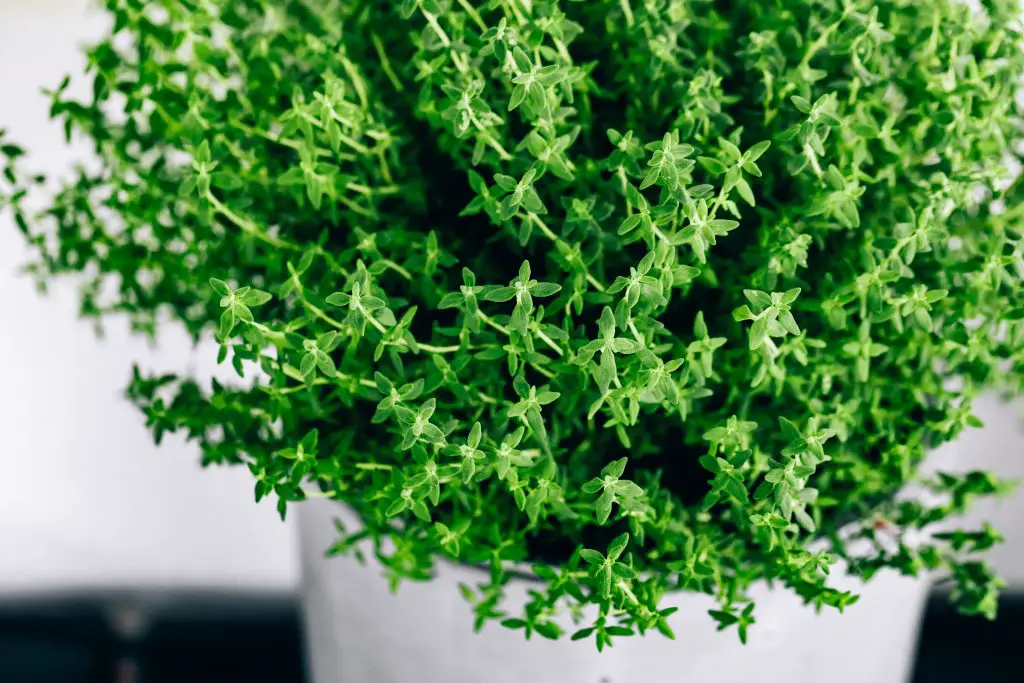
There are two types of herbs: the leafier kind and the woodier kind. Leafier plants die faster after blossoming so it’s important to prune them more frequently. The woodier herbs such as thyme and rosemary should also be trimmed so they don’t become too woody. As soon as you see new leaves grow, trim the leaves.
Herbs will grow back after cutting as long as the plant is healthy. Cutting back herbs can stimulate additional growth of the plant. Some plants are more resiliant than others
Basil is a recommended herb for a first-time gardener because it grows fast and can survive even if you don’t water it frequently.
Will herbs grow back after cutting?
It is very possible to grow a never ending supply of herbs from cuttings! The speed of the herbs growing back depends on the type of herbs. Evergreen herbs such as thyme, sage and rosemary grow back once a year, so you can prune them during the early spring.
Pruning encourages fresh growth for your herbs, so it is recommended to avoid cutting your herbs near the end of growth season for that is when the herbs must “toughen up” for winter. Think of it as giving your herbs a simple haircut. The cold season is when plants are in their dormancy stage, so there is little to no growth during this time. For best results, start cutting early in the year as soon as new growth is starting to show.
Cutting your herbs is highly recommended because it helps your herb to become more compact. Herbs that aren’t pruned can grow too tall and top heavy. A properly pruned herb is shorter and denser. The three fastest growing herbs are basil, dill and mint.
How long will my herbs live?
Most herbs are perennial, meaning they will either stay green or go dormant through the winter season. They will come back during spring. The other type of herbs are annual herbs wherein they only live for one season and have the life expectancy of 1-4 months. An exception to this is parsley. This herb is biennial, living for an estimate of 1 year before it starts to seed.
How much water and sun do my herbs need?
Herbs usually need an average of 4 hours of sunlight per day. Watering can be done if the herbs feel dry. For lavender, the soil needs to be completely dry before being watered again. Other examples of dry herbs are oregano, rosemary, sages, marjoram, tarragon and thyme. In contrast to these are moist herbs where the soil must be frequently wet. More examples of moist herbs are mint, cilantro, basil, arugula, dill, and chives.
How do I cut herbs in order for them to grow back after cutting?
Heavy-duty scissors or clippers are not usually required to cut most herbs because of their soft stem. You can use your fingers to firmly pinch the leaves off the stem. Make sure your hands are always clean before pinching the herbs to cut them. The cut must be clean from the stem of the plant. Be careful not to touch the tiny buds beneath it. It’s crucial that you don’t rip off or tear the stems of the plants because it might lead to unwanted diseases. Each time you remove a primary stem, your herb will try to re-grow 2 new stems under the pinch or cut. This encourages a thicker plant instead of a taller plant. This practice also helps to keep your herb to focus on creating new leaves instead of flowers and seeds.
Herbs that respond well to pinching include the following: tarragon, basil, sage, thyme, marigolds and scented geraniums.
“Tipping” is a technique wherein you remove 1-2 inches of your herb’s stem. The exposed tip will then split into separate branches. If you develop this habit of tipping, your plant will have a more full foliage. Use sharp, clean scissors to avoid plant damage and to encourage good plant growth after the cut.
It’s a good time to start trimming when your herb grows to 3 to 4 inches above the soil. Cut your herbs by looking for a branch right after the “v” of 2 small ones. If you leave this “v” alone, it will encourage plant growth. Just make sure to leave good leaves behind as this will be the base for your herbs to continue growing. As your herb continues to grow back, you can prune it every 3 to 4 inch of new growth. After several pruning, you will be surprised that your harvest yield is enough to fill out your favorite recipe!
How much cutting can I do for my herbs for them to grow back?
While owning an herb means almost every part is consumable, be wary about pruning too much! Bigger is not always better when cutting your herbs. Big leaves are very important for the overall health of your plant. These leaves are crucial since they absorb way more sunlight than smaller leaves. Make sure that you leave these leaves alone to assure the overall health of the plant. New leaves are more tender and flavorful than the bigger leaves. You are usually safe to cut half of a healthy plant at most without reducing it’s chance to regrow.
How should I cut herbs with flowers?
There are a variety of herbs that decide it’s time to reproduce. Your herb will then focus a great deal of energy on creating more flower seeds and stop making more leaves. Harvesting flowering herbs like sage, thyme and basil should be done before the flowers bloom.
The leaves will lose most flavor when the flower appears. Moreover, the plant becomes more woody than usual. Once you see a flower bud, quickly snip all of it off. You do have the choice to leave some buds if you are keen on seeing butterflies and bees in your garden.
Why are my herbs leaning to one side?
This just means that your herbs are growing at a rapid pace towards the sun. If your herbs are housed in pots, simply rotate the pots around so that your herbs are leaning away from the sun. This is usual behavior for thyme and rosemary bushes.
What do I do about dead branches?
Remove the dead branches as soon as possible, because they will hinder the growth of your herbs. Cut all the dead branches back to the soil. However, avoid cutting more than 1/4 of the overall healthy branch of the herb. If you trim too much too quickly, it will affect its ability to rebound.
Is my plant actually dead though?
Provided that your plant is in good soil with a regular watering schedule, your plant might just be dormant from winter. This means that they are likely to regenerate in the coming weeks.
What can I do with herb trimmings?
Aside from consuming your herb trimmings, you can re-plant them. Plenty of trimmings can be re-rooted with minimal effort and without the aid of any fertilizer. Herbs are too sensitive and can easily die from poisoning after absorbing the fertilizer. This gives you more herbs for re-planting or your own consumption! If you want to ensure plant growth, you can opt to include a natural rooting hormone for your cuttings.
Re-growing your own herb trimming is very simple, All you need to do is to place your trimming inside a jar with some water and allow it to absorb sunlight from a window. It is very important that you replace the water every few days. If you don’t do so, your herbs will not grow its best because of the dirty water. Murky water means your herb will not receive sufficient oxygen and nutrients.
Eventually, new roots will emerge from your trimmings. This depends on the plant conditions. Root emerging can take days to several weeks (rosemary takes an average of 2 months to grow). Once the root emerges and is 1 to 2 inches long, you can then transplant the trimming back to the ground or in your container garden. For woodier herbs, you should take cuttings from green growth as older stems don’t sprout roots easily.
If you want to place the herb cutting with roots back in the garden, you can choose to toughen the roots first by dropping small pebbles to the roots each day for seven days.
Rooting in water is water is most effective for soft-stemmed herbs like mint, lemon balm, basil, stevia, and oregano.
Annual herbs however do not work with this method because they should be grown from the seed. Examples of annual herbs include dill, cilantro and parsley.
Aside from soil, where can I store my herb cutting with roots?
You can choose to put your herb cutting with roots in a jar. Make sure the jar is spacious enough to allow air flow around the leaves. Opaque or amber glass is recommended because clear glass encourages the growth of algae. You can also avoid algae growth by regularly changing your water. Y
ou may also use green bottles because this color filters out red and blue light rays which aid in making the water clean.
Buying fresh herbs from the grocery can be very expensive. Raising your own herb garden is easy, cost-efficient, sustainable and rewarding. Good luck, gardener!
